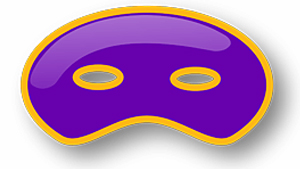DNS (Domain Name Server) is one of the most integral components of the internet. Not so many people know about it yet it is one of the crucial pillars that hold the entire internet together. Just to know how integral DNS is, when you were accessing this site, there are many background processes that were queried without your realization. It also renders domain names usable. If DNS was not working properly, you would have had to type in the IP address of this site in order for you to access the content.
There are very many different DNS server software today. Each DNS server has its own set of characteristics that differentiate it from the rest. Here’s a comparison of the different DNS servers out there.
BIND
BIND was written in the 1980’s. It has been in existence for over 30 years during which it has been able receive constant upgrades. It is still regarded as one of the best DNS server software.
Bind can be able to serve as an authoritative name server or a recurs or. It also has some of most advanced DNS features which include IPv6, DNSSEC and TIG transfers. It also has an intuitive web interface that makes it easy to manage the server. You can also manage it through the command line interface.
During its earlier years, BIND was mostly used in UNIX platforms. However, given the number of upgrades that it has had over the years, BIND can be used across all platforms nowadays.
 Unbound
Unbound
Unbound is a more recent server software having been developed in 2006. It was later rewritten from its original Java form to C language. What makes Unbound a great DNS server software is the fact that it was made with modern features in mind and using the latest technologies that are a requirement for modern day server technology. Unlike BIND which can be used as both an authoritative and recursive name server, Unbound can only be used as a recursive name server. However, it has modules which support the DNSSEC feature.
Just like BIND, Unbound was created for use on Unix-like operating systems. However, recent developments have allowed it to be used on Windows machines.
 PowerDNS
PowerDNS
PowerDNS was written in C+++ in the late 1990s. It has been able to rise to become of the top DNS server software rivalling veterans like BIND. Part of this rise was contributed to the fact that it had a huge developer community who were always contributing to it. As of now, PowerDNS is a fully robust DNS server software that has all features similar to those of BIND and other powerful DNS servers.
However, unlike BIND and Unbound, PowerDNS does not have an interface. For you to manage it, you’ll have to be conversant with the command line interface.
 Erl-DNS
Erl-DNS
Just as the name suggests, Erl-DNS was written in the Erlang language. It can be used as an authoritative name server and also provides fast query responses.
It features a number of storage techniques for zone data can be extended through the module system present in Erlang.
 Dnsmasq
Dnsmasq
Dnsmasq is a free software that was first released in 2001. It one of the lightest DNS servers and can be easily configured. It also works as a DHCP server and a DNS forwarder. Just like PowerDNS, Dnsmasq can only be managed through the command line interface. It’s generally recommended for small networks.
Given that it is under the GPL licence, Dnsmasq has become a part of Linux distributions nowadays.
 Microsoft DNS
Microsoft DNS
Just as the name suggests, this is the server software for Windows machines. It can be able to serve as an authoritative name server as well as a recursive one. It features a standard DNS zone file, supports CLI management, DNSSEC, Dynamic DNS and NSEC3 support among others. It can be generally used on many enterprise networks.



 Unbound
Unbound PowerDNS
PowerDNS Erl-DNS
Erl-DNS Dnsmasq
Dnsmasq Microsoft DNS
Microsoft DNS